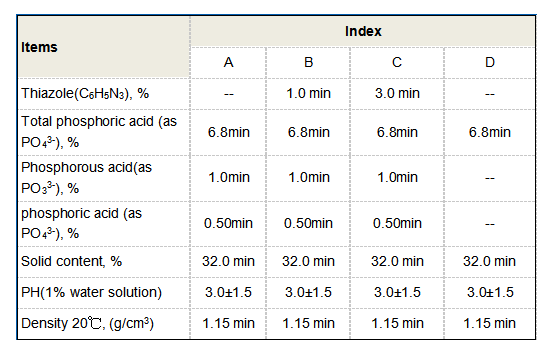what is poly aluminium chloride
Understanding Poly Aluminium Chloride A Comprehensive Overview
Poly Aluminium Chloride, commonly abbreviated as PAC, is a widely utilized chemical compound in various industries, primarily known for its effectiveness in water treatment processes. This article delves into the composition, properties, applications, and benefits of PAC, providing insight into why it has gained prominence in the field of water purification and other sectors.
What is Poly Aluminium Chloride?
Poly Aluminium Chloride is an inorganic polymer that consists of aluminium chloride units. Its chemical formula can be represented as [Al2(OH)nCl6-n]m, where “m” indicates the degree of polymerization, and “n” varies depending on the formulation. PAC is produced by reacting aluminium hydroxide with hydrochloric acid, resulting in a high molecular weight compound that possesses enhanced flocculation properties.
The product is usually available in both liquid and solid forms, making it versatile for different applications. The predominant forms include poly(dialuminium chloride) and polyaluminium chloride ferric, which offers different properties tailored for specific uses.
Properties of Poly Aluminium Chloride
PAC is characterized by several key properties that contribute to its efficacy as a coagulant
1. High Adsorption Capacity The polymeric structure of PAC enables it to adsorb a significant amount of impurities, leading to better coagulation. 2. Low Dosage Requirement Due to its high efficiency, PAC typically requires lower dosages compared to traditional coagulants like alum. This reduces overall chemical usage and can lower operational costs.
3. Broad pH Range PAC is effective across various pH levels, making it suitable for treating waters with different chemical compositions and conditions.
4. Rapid Settling Rate PAC facilitates quicker particle aggregation and sedimentation, enhancing the speed of the water treatment process.
5. Non-Toxic PAC is considered safe for use in drinking water treatment, with low toxicity levels, making it suitable for food and beverage processing.
Applications of Poly Aluminium Chloride
PAC's primary application is in water and wastewater treatment. It serves as a coagulant in the clarification of drinking water and as a flocculant in wastewater treatment plants, aiding in the removal of suspended solids, turbidity, and contaminants.
what is poly aluminium chloride

1. Drinking Water Treatment PAC is extensively used in municipal water treatment facilities to effectively clarify water and ensure it meets safety standards. Its ability to work efficiently in varying pH levels allows for effective treatment of different water sources.
2. Wastewater Treatment In industrial applications, PAC is utilized to treat effluents containing organic and inorganic impurities, facilitating the removal of harmful substances before discharge into the environment.
3. Paper and Pulp Industry PAC is used in the paper industry as a retention aid and to improve the quality of paper through better fiber retention and drainage.
4. Textile Industry In textile manufacturing, PAC helps in removing dyes and chemicals from wastewater, contributing to the reduction of environmental pollution.
5. Food and Beverage Processing The non-toxic nature of PAC makes it suitable for use in food processing applications, including the clarification of juices and beverages.
Benefits of Using Poly Aluminium Chloride
The use of PAC offers numerous advantages
- Cost-Effective The high efficiency of PAC means that lower quantities are required, ultimately leading to cost savings in chemical procurement and handling.
- Enhanced Water Quality PAC helps in producing clearer and higher-quality water, which is essential for both drinking water and industrial applications.
- Environmental Compliance The improved removal of pollutants facilitates compliance with environmental regulations, minimizing the impact on natural water bodies.
- Operational Efficiency The rapid settling properties of PAC can lead to shorter treatment cycles, enhancing the overall operational efficiency of water treatment facilities.
Conclusion
Poly Aluminium Chloride is a vital chemical in the realm of water treatment and various industrial applications. Its unique properties and benefits make it an essential component in ensuring clean water supply and efficient wastewater management. As industries continue to seek more effective and sustainable solutions, PAC is likely to remain a preferred choice in many sectors, demonstrating its versatility and significance in modern applications.
-
lk-319-special-scale-and-corrosion-inhibitor-for-steel-plants-advanced-solutions-for-industrial-water-systemsNewsAug.22,2025
-
flocculant-water-treatment-essential-chemical-solutions-for-purification-processesNewsAug.22,2025
-
isothiazolinones-versatile-microbial-control-agents-for-industrial-and-consumer-applicationsNewsAug.22,2025
-
scale-inhibitor-key-solutions-for-water-system-scale-preventionNewsAug.22,2025
-
organophosphonates-versatile-scale-inhibitors-for-industrial-water-systemsNewsAug.22,2025
-
scale-and-corrosion-inhibitor-essential-chemical-solutions-for-water-system-maintenanceNewsAug.22,2025





